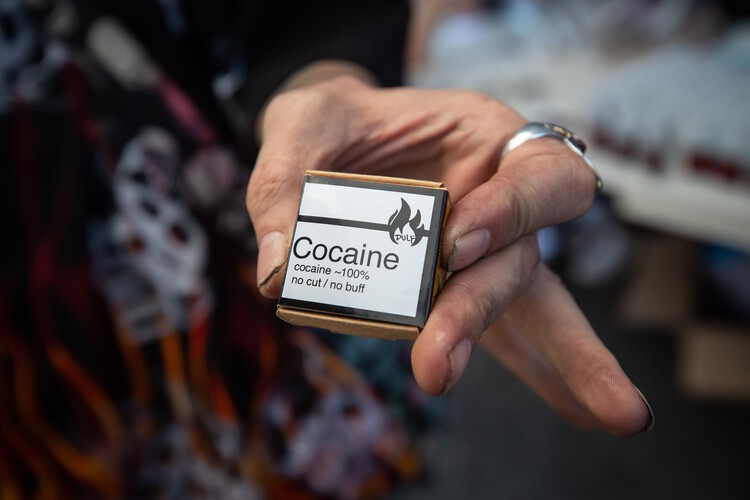After the British Columbia RCMP kept reporting that government-distributed “safer supply” opioids were showing up in drug busts, a leaked memo has emerged in which the province’s Mounties were allegedly told to step carefully around “hot button issues.”View attachment 17510
LANGLEY, B.C. - British Columbia Premier David Eby says he is "astonished" that Health Canada has granted a cannabis company the right to possess, produce, sell and distribute cocaine.
Adastra Labs in Langley, B.C., said in a news release that Health Canada gave it approval on Feb. 17 for an amendment under its controlled substance dealer’s licence.
Surprise…surprise…surprise…Eby told a news conference on Thursday about funding for overdose prevention and mental health that, "if Health Canada did in fact do this," the federal agency did so without engaging the B.C. government or notifying the province.
“It is very clear we are in a pre-election time period and the topic of ‘public safety’ is very much an issue that governments and voters are discussing,” reads a March 11 email from the headquarters of E Division, the B.C. branch of the RCMP.The premier said the province will be contacting Health Canada for answers.
"It is not part of our provincial plan," he said, referring to the ongoing effort to stem the overdose death rate, with an average of more than six people dying every day in B.C. in 2022.
Directed at the province’s 150 RCMP detachments, it instructs officers to not directly address potentially controversial topics, instead routing those inquires from journalists and government communications staff, through central HQ. Among a supplied list of potential “hot button issues” are drug seizures and drug decriminalization.Health Canada has not responded to requests for comment.
The memo was obtained by the long-form media outlet Northern Beat, which has closely followed the controversies erupting from B.C.’s pursuit of “safer supply.”Decriminalization of up to 2.5 grams of drugs, including cocaine, began in B.C. on Jan. 31, after the federal government approved the decriminalization exemption as one of several steps to combat the crisis.
In a statement to the National Post, E Division said Northern Beat’s characterization of the memo as a “gag order” was inaccurate.
“Organized crime groups are actively involved in the redistribution of safe supply and prescription drugs,” Cpl. Jennifer Cooper of the RCMP’s Prince George detachment told the National Post in March.More than 11,000 people have died from illicit overdoses since British Columbia declared a public health emergency in 2016. Deaths soared as the opioid fentanyl became the dominant illicit drug.
Adastra said in the statement the amended licence allows the company to “interact” with up to 250 grams of cocaine and to import coca leaves in order to make and synthesize the substance.
Adastra CEO Michael Forbes said it will evaluate how the commercialization of the substance fits in with its business model in an effort to position itself to support the demand for a safe supply of cocaine.
“Harm reduction is a critically important and mainstream topic, and we are staying at the forefront of drug regulations across the board,” Forbes said. “We proactively pursued the amendment to our Dealer’s License to include cocaine back in December 2022."
The topic of Adastra's licence amendment to include cocaine was broached during question period at the B.C. legislature, where Opposition leader Kevin Falcon criticized the move.
"Cocaine isn't prescribed, it isn't safe, and this is wrong," Falcon said. "Commercializing cocaine as a business opportunity amounts to legalizing cocaine trafficking, full stop."
Kevin Hollett, a spokesman for the B.C. Centre on Substance Use, said in a written response that the agency knows "very little" about the exemption granted to Adastra.
She added, “it might mean how we regulate our safe supply might need a sober second glance.”
National Post correspondent Adam Zivo cited interviews with more than a dozen addiction-medicine specialists and concluded that addicts were routinely obtaining safer supply only to flip it onto the black market for cash.Hollett said the B.C. safe supply policy released in July 2021 focused on opioids.
"To my knowledge, prescribed safer supply in BC is focused on opioids, so I’m not clear how this might fit in, if it does at all," he said.

B.C. premier 'astonished' firm got Health Canada approval to make and sell cocaine — The Canadian Press
LANGLEY, B.C. - British Columbia Premier David Eby says he is "astonished" that Health Canada has granted a cannabis company the right to possess, produce, sell and distribute cocaine.apple.news
The consequences of this were two-fold: The “toxic illegal drug supply” was actually being subsidized by the proceeds of reselling safer supply. Meanwhile, that same black market was suddenly being flooded with dirt-cheap hydromorphone.
FIRST READING: With 'safer supply' showing up in busts, RCMP told to step carefully — National Post
The Mounties have repeatedly embarrassed B.C. authorities by revealing instances of "safer supply" opioids being trafficked illegally